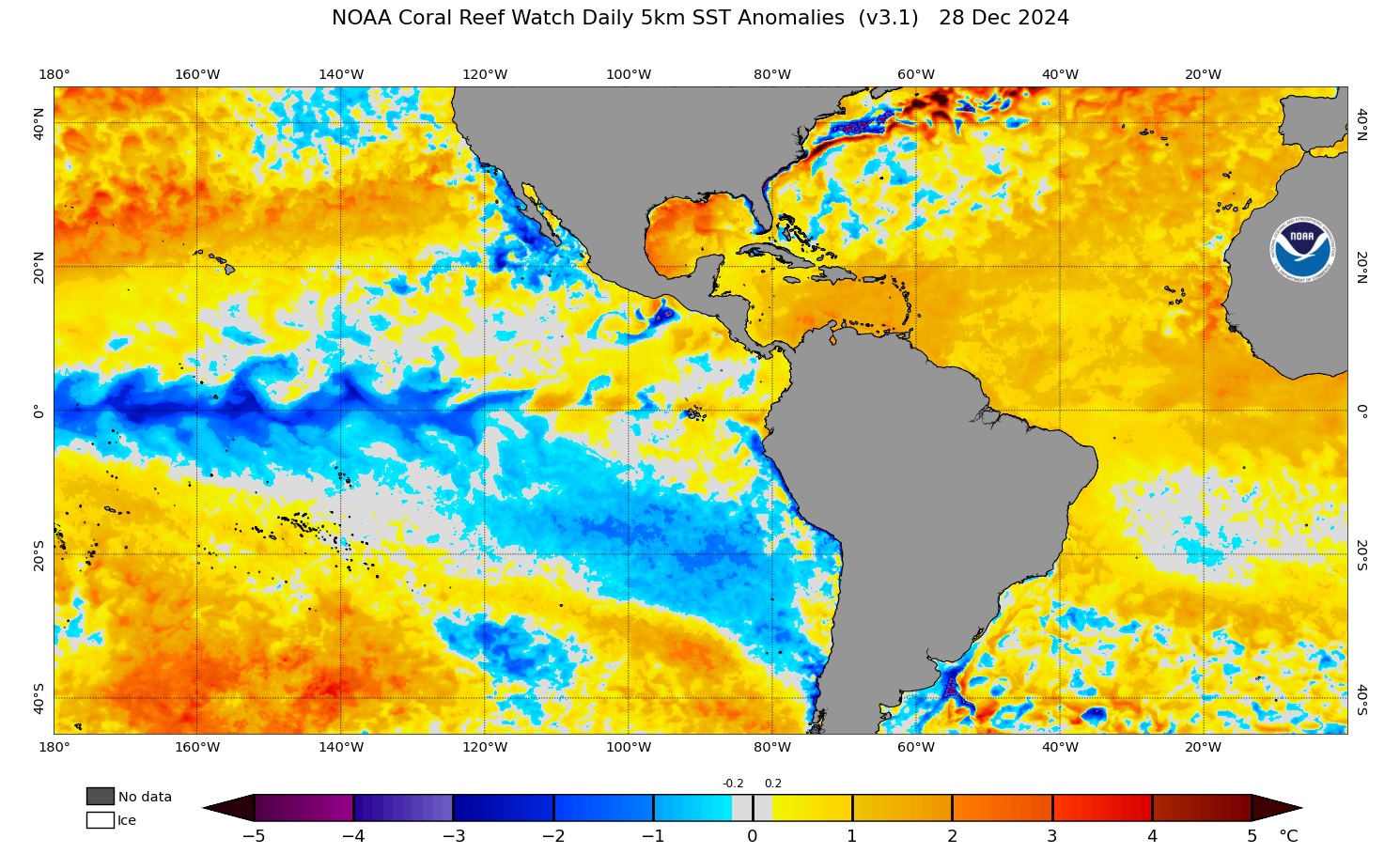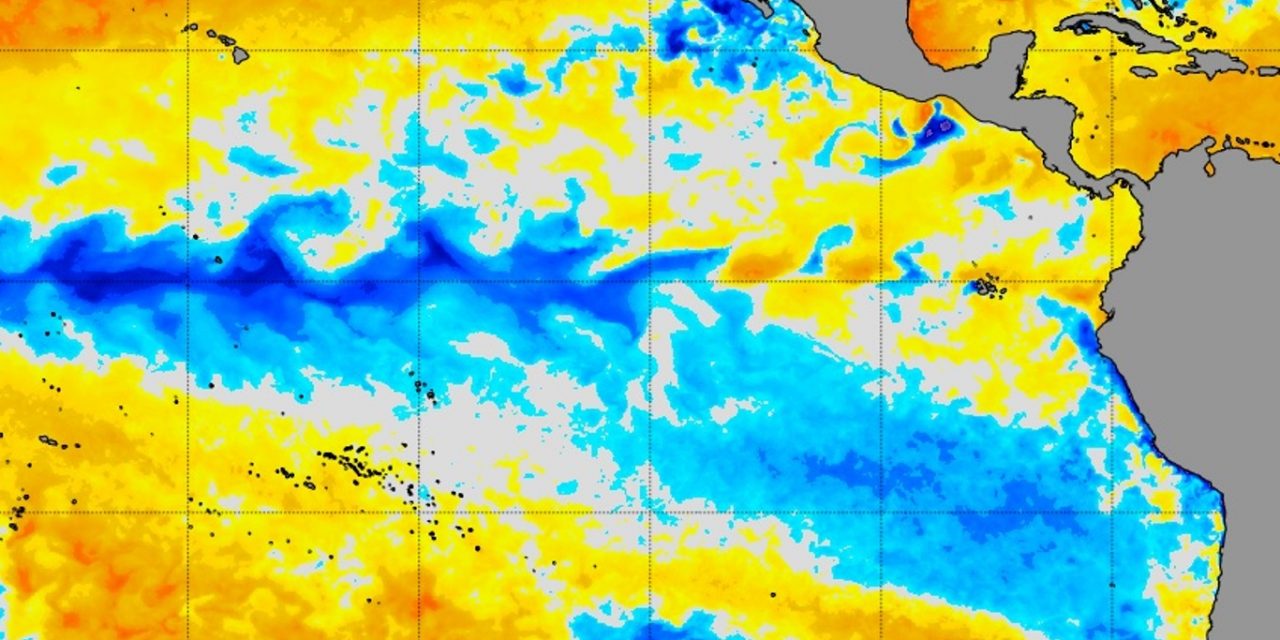MetSul believes that the La Niña phenomenon has finally developed in the Pacific after months of anticipation and an atypically delayed onset. According to MetSul, the NOAA (National Oceanic and Atmospheric Administration) in the United States is on the verge of officially declaring a La Niña event, which could happen this week or early January.
It is quite unusual for a La Niña event to begin or be declared around the turn of the year. If confirmed, it could be the latest onset of the phenomenon observed in the last 50 years, as the events typically begin in late austral winter or early spring.
La Niña is defined as a coupled pattern between the ocean and atmosphere in the tropical Pacific Ocean. To characterize La Niña conditions, surface waters in the tropical Pacific must be at least 0.5°C cooler than the long-term average (1991–2020) and show evidence of changes in the Walker Circulation, the atmospheric circulation over the tropical Pacific.
These atmospheric signs include stronger winds in the upper layers and near the surface (trade winds) in the tropical Pacific, more rainfall than usual over Indonesia, and less rainfall over the central Pacific—all of which have been observed in recent weeks.
For a La Niña event to be declared, both the ocean and atmosphere must display these changes, as their interactions help La Niña to form and persist for several months. Thus, two criteria are essential: oceanic and atmospheric indicators.
Although atmospheric conditions had already shown signs of La Niña, sea surface temperature anomalies did not initially align with the phenomenon. Only in NOAA’s weekly report of December 11st. the reported anomaly fell into cold phase territory.
Recent Developments
In the past 15 to 20 days, a greater cooling of surface waters in the equatorial Pacific Ocean has been observed, and sea temperature anomalies have solidly entered La Niña territory.

NOAA
Last week, for the second consecutive week, the sea surface temperature anomaly in the east-central Pacific was at -0.8°C. The NOAA bulletin to be released later today will report an even lower value of -1.1°C, placing it firmly within the classic cold phase of the Pacific.
In MetSul’s assessment, both oceanic and atmospheric conditions now reflect a La Niña pattern, confirming the onset of the phenomenon in the equatorial Pacific Ocean.
Current Conditions
According to NOAA data released this Monday, the sea surface temperature anomaly in the east-central equatorial Pacific (Niño 3.4 region) is -1.1°C. This value is at the lower end of the moderate La Niña range (-1.0°C to -1.4°C).
The -1.1°C anomaly is the lowest observed in this region of the equatorial Pacific this year. Over the past four weeks, the average sea surface temperature anomaly in this region has been -0.7°C, indicating weak conditions.
In contrast, the Niño 1+2 region, which measures sea temperatures off the coasts of Peru and Ecuador but is not used to define ENSO, currently shows a neutral anomaly of -0.2°C. Thus, the cooling episode is concentrated in the east-central Pacific, making it a more centrally located event.
How Long Will La Niña Last?
This event, in its early stages according to MetSul, is not expected to last long. Unlike the 2020–2023 event, which was unusually prolonged, this one is expected to be brief and weak, lasting only three to five months, based on climate model data.

NWS
According to NOAA’s monthly update, the probabilities for the December–February climatological summer/winter period are 72% for La Niña, 28% for neutral conditions, and 0% for El Niño. For the January–March 2025 period, the estimates are 63% for La Niña, 37% for neutral, and 0% for El Niño. From February to April, the probabilities are 51% for Niña, 49% for neutral, and 0% for El Niño.
For the March–May 2025 autum/spinng period, NOAA estimates 32% for Niña, 67% for neutral conditions, and 1% for El Niño. From April to June 2025, the probabilities are 29% for Niña, 66% for neutral, and 5% for El Niño. Finally, for the May–July 2025 period, the estimates are 27% for Niña, 63% for neutral, and 10% for Niño.




